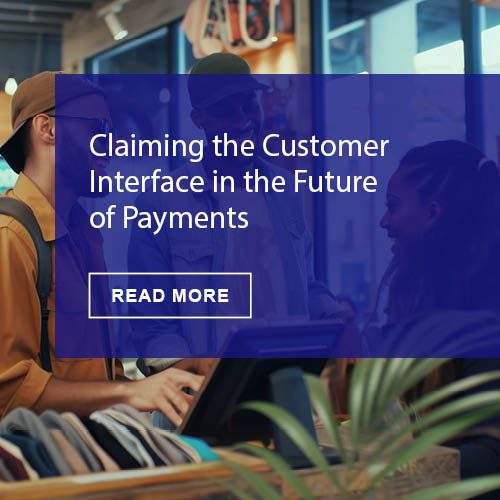I’ve been in the P2P/payment space for over 15 years. Before that, I spent a bunch of years selling payroll automation. Payroll automation achieved mass adoption relatively quickly—few companies today pay employees manually.
I figured—wrongly—that procure-to-pay was the next green field for back office technology. Just as every company has to pay its employees, every company also has to pay its suppliers. Manual processing for both payroll and supplier payments is expensive, inefficient, and non-scalable. Technology for procurement and invoice handling seemed on the verge of breaking through, similarly to payroll technology back in the day.
I wasn’t alone in thinking that. In 2005, the company I worked for brought in an analyst in the space to address our sales team about industry trends. He told us that invoice processing would be paperless by 2010. We’ve come a long way, but here in late 2019, far too many companies still deal with paper invoices and manual processes. Supplier payment automation can help change that—here’s how.
Not Just the Novelty
When I first started selling P2P solutions, the primary challenge I faced was a lack of awareness—most organizations didn’t know there was a better way to process invoices. Standard operating procedure was to hire a bunch of people to review invoices, manually enter them into the financial system, and get them paid. More invoices? Hire more people—just as it had been with payroll.
Some companies hired “Black Belts” to make changes to their processes by creating shared service centers or, in some cases, outsourcing the entire department to a Business Process Outsourcing (BPO) company. That had its own issues—namely lack of control and timing gaps, since many of these BPOs sat halfway across the globe.
As time went on, P2P solution providers became more widely known, and a growing number of companies adopted these solutions in order to reduce costs and increase efficiency by getting visibility into spend and putting more controls on how employees purchased goods or approved invoices.
Clearly that real challenge wasn’t lack of awareness. It was getting the project to the top of the list in a given company. Without a doubt, P2P solutions can drive positive ROI, but so can many other initiatives. Implementation of these types of projects can be lengthy, and eat up time and resources in procurement, finance and IT.
Based on my experience, for organizations with annual revenues greater than $500m, a typical P2P project can come with one-time implementation fees north of $250k (or more with the addition professional services) and implementation timeframes of nine months to a year or more. That’s a pretty big chunk of change for ROI that may take another year or so to manifest. As a result, these projects get pushed aside in favor of initiatives that generate revenue relatively quickly.
That was the case with countless companies I called on—they saw the value but still couldn’t get it done. Selling the ROI for P2P solutions was far more challenging than doing the same for payroll solutions. It was frustrating as hell.
The lightbulb clicked on for me in 2013 while attending an IOFM show in Orlando. Across the aisle from our booth was a company I’d never heard of: Nvoicepay. Thinking they were a competitor, I ventured over to see if I could gather some intelligence on them.
They weren’t a competitor at all. They didn’t match invoices to POs or automate the approval workflow for posting invoices to a financial system. They were a payment company that simplified supplier payments by any method—check, ACH or card—through a single interface. Plus, their solution complemented my invoice automation solution, and the increased efficiency and card rebates would significantly increase the ROI for my customer and help get the project to the top of their list! Now we could actually offer customer a procure-to-pay, solution, not just procure-to-ost.
Fast forward to 2019: I’m now working for Nvoicepay. Companies still want to automate their procure-to-pay processes, and still can’t figure out how to get the project onto the go list. Although P2P technology has improved significantly, those projects are still relatively lengthy and require resources—and therefore buy-in—from procurement, finance and IT.
Nvoicepay implementation is fast—we’re talking weeks, not months or years, to go live like a P2P project. We also require very few IT resources during the implementation, which doesn’t require the level of integration a P2P solution does. Quite frankly, when you send us a remittance file, we’ll pay 100% of your vendors regardless of payment type. Additionally, because we collect banking info from your vendors, we indemnify all payments and guarantee that funds will get to the appropriate supplier/vendor. You get a ton of process efficiencies, and the ROI starts on the first day a customer goes live, with monthly rebates generated from virtual card payments.
There’s still a conundrum. Companies want P2P but can’t figure out how to get there, and they’re not sure what to do first. Do we automate P2P and then finish it off by automating payments, or do we flip the scenario around? As companies trying to discern which should come first, I firmly believe that many companies may not fully understand what an enterprise payment platform can bring to the table and how the ROI it drives can fund their P2P project.
What I’ve Seen in 15+ Years in the P2P Space
Swinerton is a $3.6b construction company who implemented Nvoicepay’s Payment Gateway in a manner of weeks for just a few thousand dollars. They quickly started seeing monthly rebates via payments processed on virtual cards add up to $1m in the first year. Their finance department saw huge process efficiencies in their first year, and actually generated better relations with their vendors and contractors. Swinerton planned on leveraging the annual rebates to fund a T&E solution that they wanted to implement. The only thing they wished they did differently was to not take so long to decide on automation.
So, what should come first, the chicken or the egg? If egg = payments, then I say egg—and not because of the side of the aisle I sit on. I say this for my investment over the past 15+ years in the space with a desire to help our customers achieve their P2P goals and operate more profitably. Additionally, it is why most if not all P2P (procure-to-post) providers are trying to figure out how to automate payments!
Jim Wright is the Vice President of Enterprise Sales in the East Region at Nvoicepay. He is a veteran of the financial industry, having served in senior roles at companies like Zycus, Corcentric, and SAP Ariba. With Nvoicepay, he delivers scalable payment solutions to enterprise companies and other large organizations.











